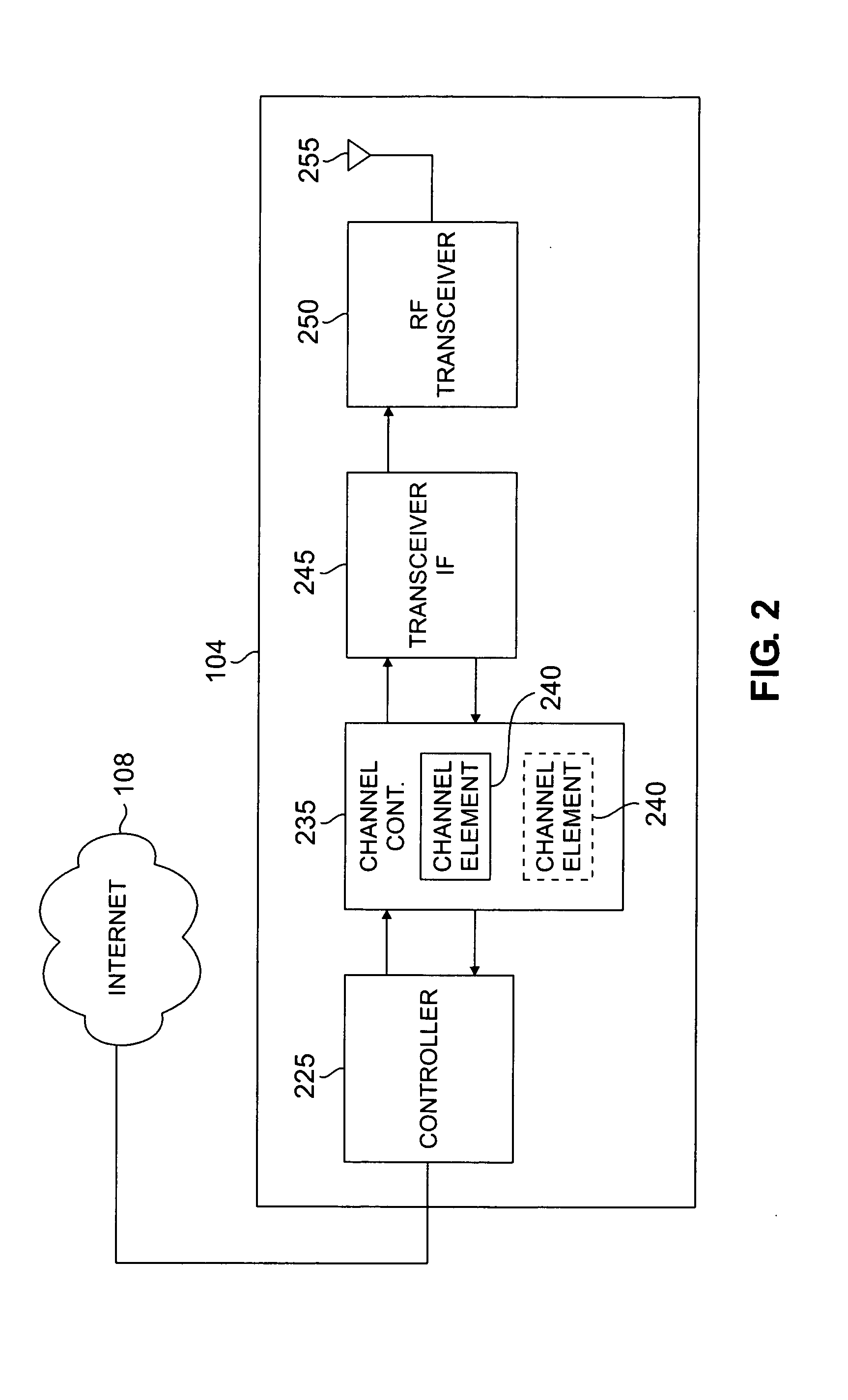Apparatus and method for a multi-channel orthogonal frequency division multiplexing wireless network
a wireless network and orthogonal frequency division technology, applied in the field of wireless networks, can solve the problems of inefficient utilization of the space between frequency channels in the available bandwidth of a given channel block, and the inability of the ofdm/ofdma network to fully and efficiently utilize the full bandwidth allocated or available to a base station
- Summary
- Abstract
- Description
- Claims
- Application Information
AI Technical Summary
Benefits of technology
Problems solved by technology
Method used
Image
Examples
first embodiment
[0044] In a first embodiment, wireless network 100 supports multiple channels 410 and 420 in which sub-carriers 440 of adjacent OFDM channels are allowed to overlap within a single base station, as at overlap regions 415 and 425, by appropriately configuring some or all of base stations 102, 104 and 106 in wireless network 100. In an exemplary implementation, each channel may cover 1.25 MHz of bandwidth with an FFT size of 128, indicating that each channel has 128 subcarriers. A single base station may, for example, support four such channels adjacent to each other, covering a 5 MHz bandwidth block. Because channels can be permitted to overlap, it is possible to either fit more channels in the 5 MHz block, or to fit four 1.25 MHz channels in less than a 5 MHz block, while still complying with the regulatory requirements on spectral emission outside of the 5 MHz spectrum block. For example, additional sub-carriers located near to the edge of the spectrum block may be configured as gu...
second embodiment
[0048]FIG. 5 depicts a simplified block diagram illustrating a single wide channel according to an embodiment of the present disclosure. In a second embodiment, a wireless network 100 supports an OFDM system with higher FFT size for a wider bandwidth channel 510, by appropriately configuring some or all of base stations 102, 104 and 106 in wireless network 100. For example, a base station may support a single channel 510 that has an FFT size of 512 and that covers an entire 5 MHz bandwidth block. In this example, the channel 510 would have 512 subcarriers (including all the guard, DC and pilot subcarriers) 540 utilizing the entire 5 MHz block, in contrast to the previous embodiment.
[0049] In order to serve users that are operating with smaller bandwidth and FFT size, sub-channels are allocated in a manner similar to the advanced modulation and coding (AMC) mode in the IEEE-802.16e standard, known to those of skill in the art. In this way, specific and contiguous sets of subcarriers ...
PUM
 Login to View More
Login to View More Abstract
Description
Claims
Application Information
 Login to View More
Login to View More - R&D
- Intellectual Property
- Life Sciences
- Materials
- Tech Scout
- Unparalleled Data Quality
- Higher Quality Content
- 60% Fewer Hallucinations
Browse by: Latest US Patents, China's latest patents, Technical Efficacy Thesaurus, Application Domain, Technology Topic, Popular Technical Reports.
© 2025 PatSnap. All rights reserved.Legal|Privacy policy|Modern Slavery Act Transparency Statement|Sitemap|About US| Contact US: help@patsnap.com



